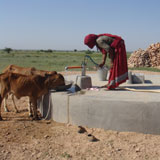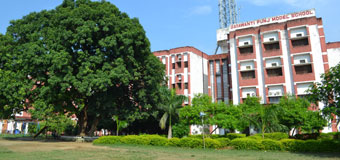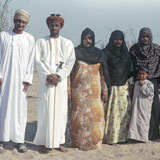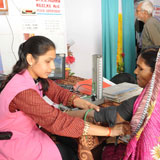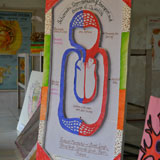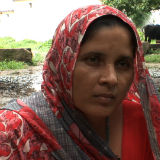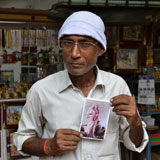Community case studies
- Communities Overview
- Project Site Communities
- Village Development, Sitamarhi
- Village Development, Bap
- Health Initiatives
- Muhammadiyan Welfare Home
Village development
The area of Bap is located in the Jodhpur district of West Rajasthan and made up of 218 individual villages. In January 2012 Punj Lloyd completed the development of its first solar power plant in the area as part of the Jawaharlal Nehru National Solar Mission by the Central Government. Having seen first hand the difficult conditions being faced by local residents, it was decided that Bap would be the location of our second Village Development Programme, following on from Sitamarhi in Uttar Pradesh.
During our research phase various interlinked issues were identified in the area including lack of access to education, healthcare and reliable employment. However the issue considered most immediately pressing was that of access to water. As it sits in the heart of the Thar Desert, the area’s predominantly agriculture-based economy is highly fragile and susceptible to drought and lack of irrigation. This impacts the income generation capacity of most families and, in turn, restricts employment opportunities within the agriculture industry. The issue is compounded by the need to purchase costly tank water for everyday use, adding further pressure to already overstretched finances.
As a result, phase one of the holistic development programme planned for Bap involves harvesting rain water through the construction of taankas at select locations across the region. Taankas are small, underground concrete tanks, found traditionally in several parts of Rajasthan, which collect rainwater from a designated catchment area.
Family selection
A baseline survey was undertaken to identify families who would benefit from an initial trial build of taankas in two villages, Mandore and Sir ki Dhani. The implementing NGO, Sahaj Sansthan, visited every household in both villages to assess families on detailed criteria of their demographics, economic, social and health status.
From these findings it was agreed to construct four taankas initially with the intention to expand construction following a thorough assessment of their success.
Taanka process
For each taanka a cluster of three to five families is formed. The land of one of the families is used to build the taanka and an agreement is signed with the others regarding its usage. Each family must donate five days of labour for the construction and a village committee is formed to monitor the progress and upkeep of the programme. The committee, which consists of the women of each family plus a local school teacher and Anganwadi member, is also trained in maintenance of the taanka and provided with a tool kit for basic repairs. A kitchen garden is built at the site of the hand pump and all benefitting families contribute to its upkeep.
Long term action
Phase one of the taanka programme is the first step in the holistic development plan. By working closely with the family clusters we are able, through our NGO partner, to also extend healthcare and education facilities to these families. It is mandated that at least 25% of the children from each family are enrolled in school and as part of the programme a doctor from a local hospital visits the family each month. After a detailed assessment of the impact of this first phase, we plan to expand our programme in several other villages on interrelated economic and social issues in the area.

